The Trident II (D-5) Missile, also known as the UGM-133A, is a U.S. inter-continental-range, submarine-launched, solid-propellant, MIRV-capable ballistic missile.
It represents the sixth and latest generation of the U.S. Navy’s Fleet Ballistic Missile (FBM) Systems marking a significant development in the United States’ missile technology.
The improvements to the ship navigation system and the missile itself enable the D-5 to target accurately, even hard targets, and significantly extend the range, payload, and inventory of the missile force.
Deployed on all 14 Trident ballistic missile submarines of the Ohio class and all 4 submarines of the British Vanguard class, it serves as the primary element of the U.S. Navy and Royal Navy’s strategic nuclear deterrent capability.
| Trident II D-5 SPECIFICATIONS | |
|---|---|
| Length: | 44 ft. 6.6 in (13.42 m) |
| Diameter: | 6 ft. 11 in (2.11 m) |
| Weight: | 130,000 Ibs+ (59,090 kg) |
| Speed: | Supersonic; over 20,000 ft/sec |
| Range: | 4,100 n.miles (7,600 km) - 6,200 n.miles (11,500 km) |
| Accuracy: | 300 ft (90 m) C.E.P. |
| Propulsion: | 3-stage solid propellant |
| Guidance: | Inertial with stellar reference update |
| Warhead: | 8 MIRV W76 nuclear (100 KT) 8 MIRV W88 nuclear (475 kt) |
| Main contractor: | Lockheed Missile and Space Coorporation (now Lockheed Martin Space Systems, Missile and Space Operations, Sunnyvale, California) |
Both U.S. and British submarines are now equipped to attack targets globally with this missile. The extended range of the D-5 enhances the patrol area of submarines, making them more elusive to enemy ships, and allows the U.S. to base its SLBM force at domestic ports, leading to the termination of Navy operations at forward bases such as Holy Loch, Scotland.
Description
Design
The UGM-133A Trident II (D-5) Submarine-Launched Ballistic Missile (SLBM) is a larger version of the UGM-96A Trident I (C-4) and integrates various advanced design features from its predecessor.
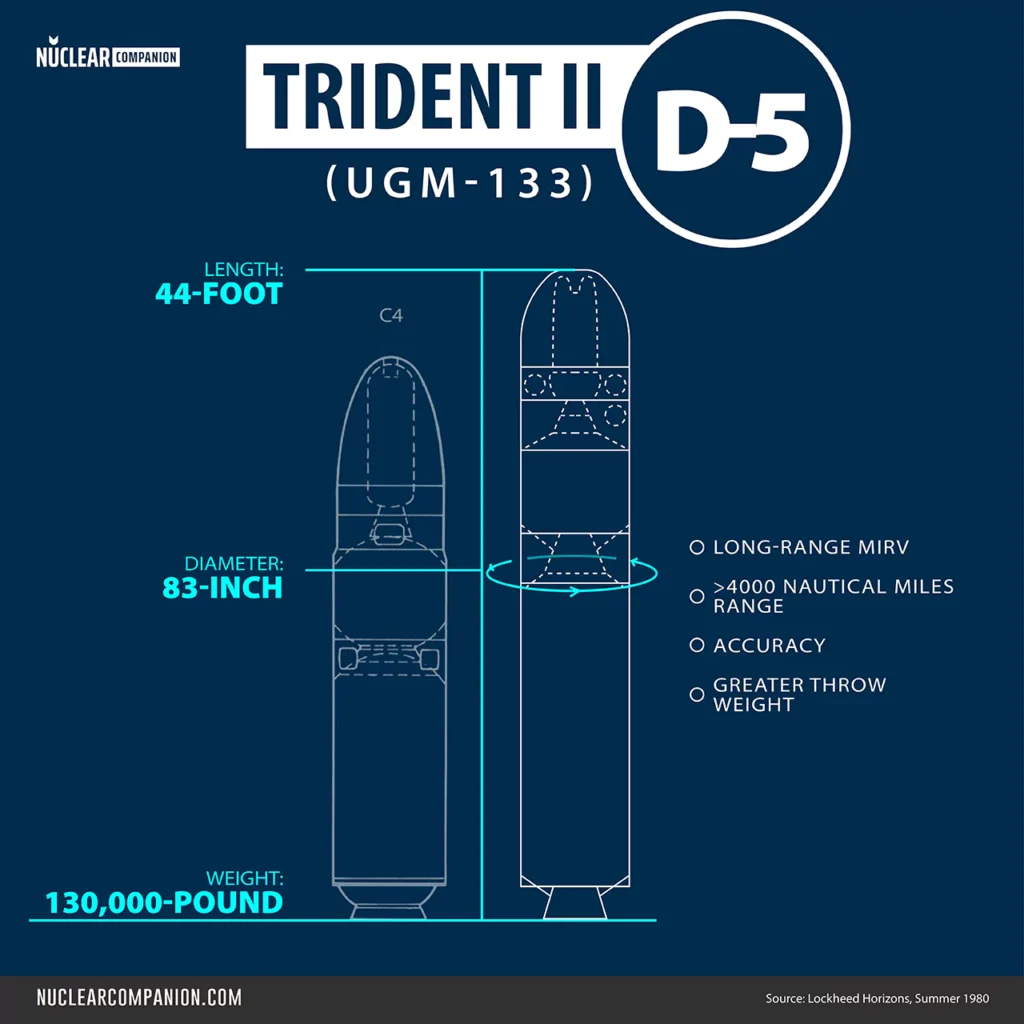
These include an extendable aerospike that deploys early in flight, lightweight motor casings, and high-density fuel, allowing for reduced drag and improved efficiency.
While the design goal of the Trident I (C-4) was to increase the missile range to allow the use of a larger patrol area, the purpose of the Trident II (D-5) was to provide greater accuracy and warhead yield capability at equivalent ranges.
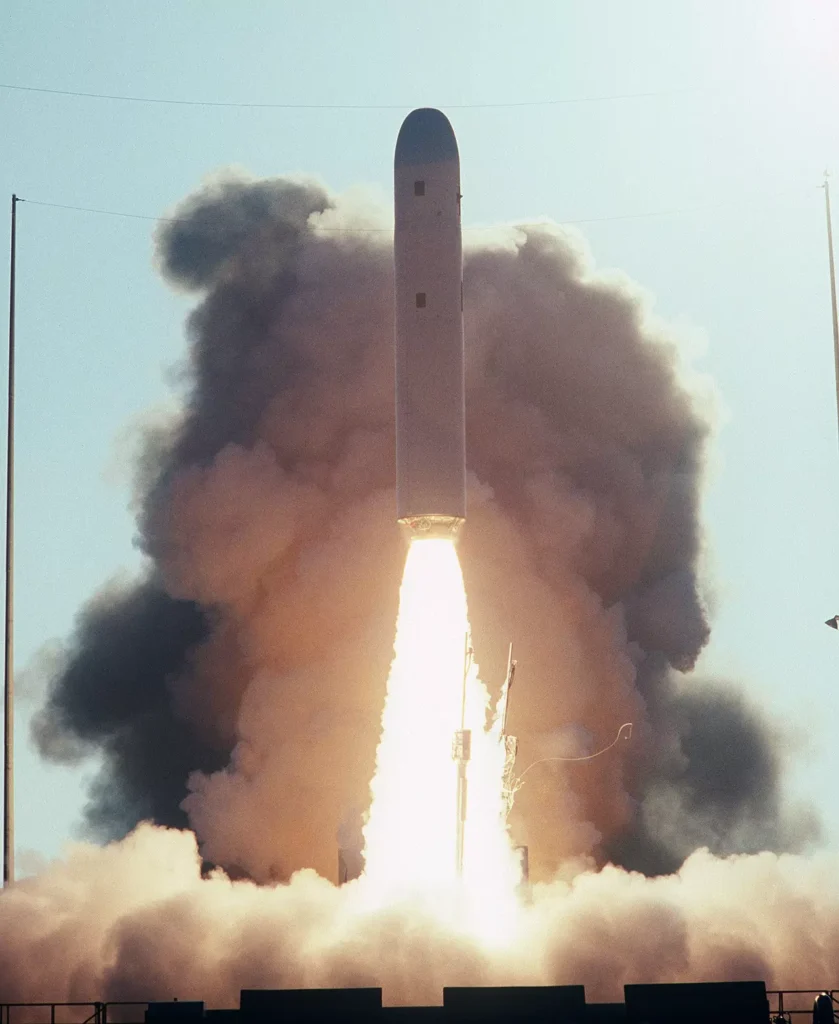
The D-5’s increased size and efficiency enhance its range from 4,000 in C-4 to 6,200 nautical miles (11,500km), using the same Trident I (C-4) Mk-4/W-76 warheads, granting the ability to target almost any strategic location in the Northern Hemisphere when launched from Ohio class submarines docked at U.S. ports.
When using the newer and heavier Mk-5/W-88 warheads in the D-5, the range of both missiles using full payload is approximately 4,000 nautical miles. However, using this configuration, the D-5 can destroy very hard targets including modern missile silos and leadership bunkers.
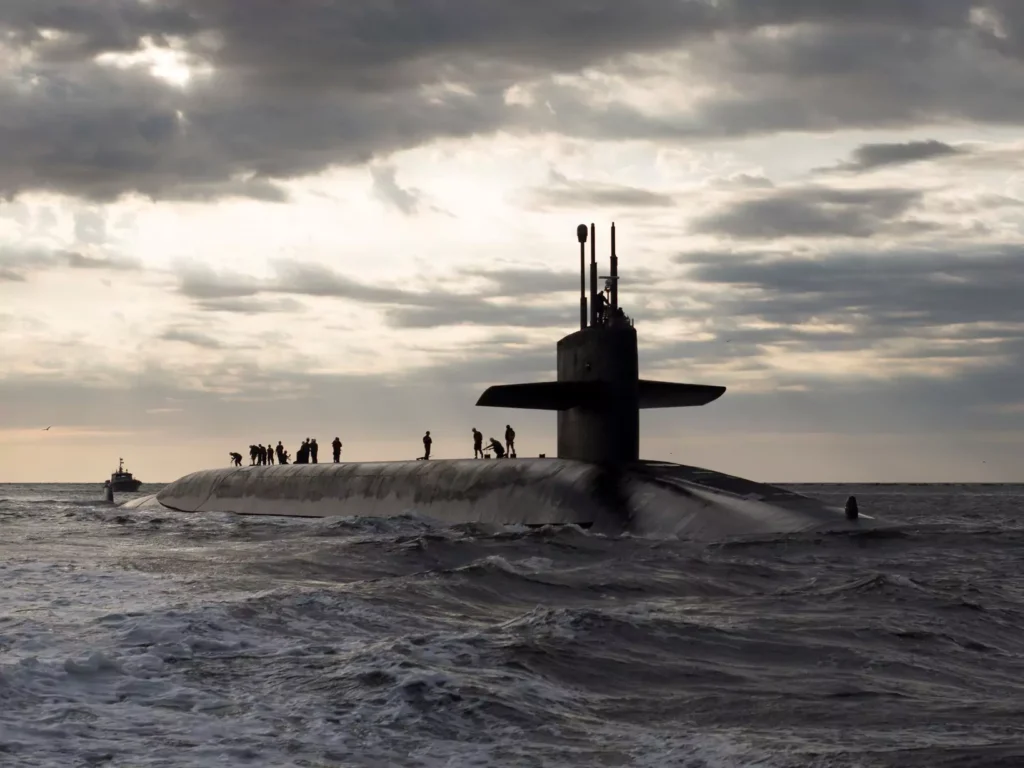
One Ohio-class submarine, fitted with the Mark 98 weapon control system, can hold up to 24 D-5 missiles each in vertical launch tubes. Some or most of these missiles are probably loaded with Mk-5/W-88 warheads and some with lighter ones.
Guidance
The Trident II (D-5) missile’s Mk-6 Guidance System significantly enhances its precision, improving accuracy by a factor of four compared to the previous Trident I (C-4) Mk-5 Guidance Subsystem.
This advanced system includes inertial guidance with stellar sensor updates resulting in the missile having a claimed accuracy of 90 meters (300 ft) CEP (Circular Error Probable). In comparison, a C-4 missile has an accuracy of 380 meters (1,250 ft).
One key aspect of the D-5’s electronic design is the inclusion of Large Scale Integrated Circuit Gate Arrays in its core logic functions, providing increased adaptability.
Propulsion
The Trident II (D-5) is a three-stage, solid propellant SLBM, boasting a maximum range of 11,500 km and a minimum range of 2,500 km.
The missile’s launch is unique, being cold launched from its canister using expanding gas, with ignition occurring upon breaching the surface.
The first, second, and third-stage motors are encased in Graphite epoxy, a material that provides a lighter and stronger casing, reducing weight and increasing range. Weight-saving materials are further extended across the missile, with all stages using filament wound motor casings.
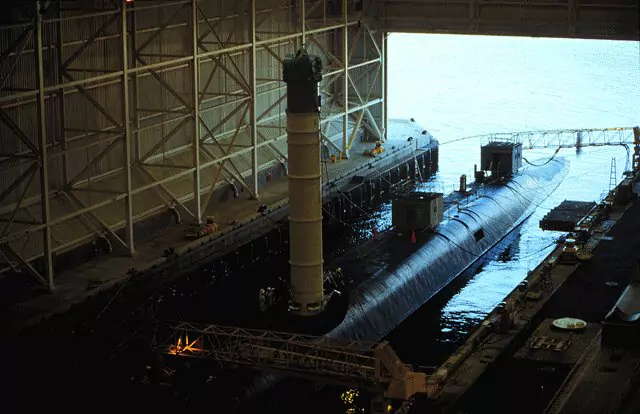
The propellant used in the Trident II (D-5) is the Nitrate Ester Plasticized Polyether (NEPE). This increased the solid fuel capacity from 70% to 75%, leading to higher energy and better performance.
The improvement in range was not solely due to the propellant itself but also benefited from the larger volume available in the Trident submarine launch tube.
Manufacturing of the First and second-stage rocket motors was carried out by a joint adventure between Hercules Aerospace Division and Morton Thiokol in Utah. The third-stage rocket motor was developed and manufactured by the Chemical Systems Division of United Technologies Corporation.
As of 2023, after several mergers, Northrop Grumman is the sole manufacturer of all three stages motors of Trident II (D-5).
Payload
The missile’s payload ranges from 8 to 14 MIRVs(Multiple Independently Targetable Reentry Vehicles), carrying different warhead configurations, including the Mk-4 RV (Reentry Vehicle) with 100 Kt W-76 warheads or the heavier Mk-5 RV with 475 Kt W-88 warheads.
The MK-4 /W-76 warhead was also used on the Trident I (C-4) missile, while the MK-5 /W-88 is a newly introduced warhead.
Countermeasures are believed to be included.
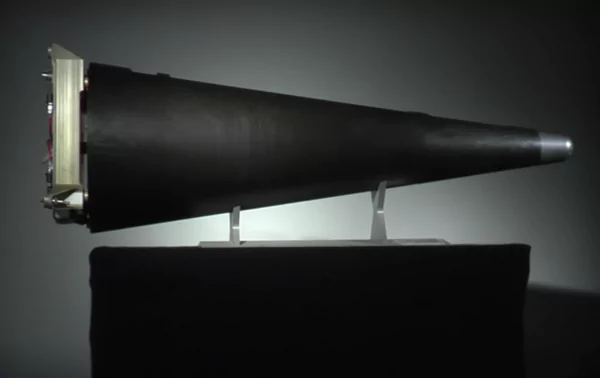
The missile has the capability to carry either eight of the heavier Mk-5 RVs or 14 of the lighter Mk-4 RVs to a maximum distance of 4,100 nautical miles (7,600 kilometers). If equipped with eight Mk-4 RVs or four Mk-5 RVs, the Trident II (D-5)’s range extends to about 6,200 nautical miles (11,500 kilometers).
When getting down to 5 reentry bodies, ballast is needed to be added in order not to alter the center of gravity and keep the missile flying straight.
A throw weight of 2,800 was declared in 1991, with a limit of 8 RVs under START 1 rules.
Development
The development of the Trident II (D-5) missile began with the Department of Defense STRAT-X study in 1966, which evolved into the Navy’s Undersea Long-range Missile System (ULMS) program. This program aimed to determine the next generation of SLBMs in preparation for the retirement of the Polaris/Poseidon missiles in the early 80s.
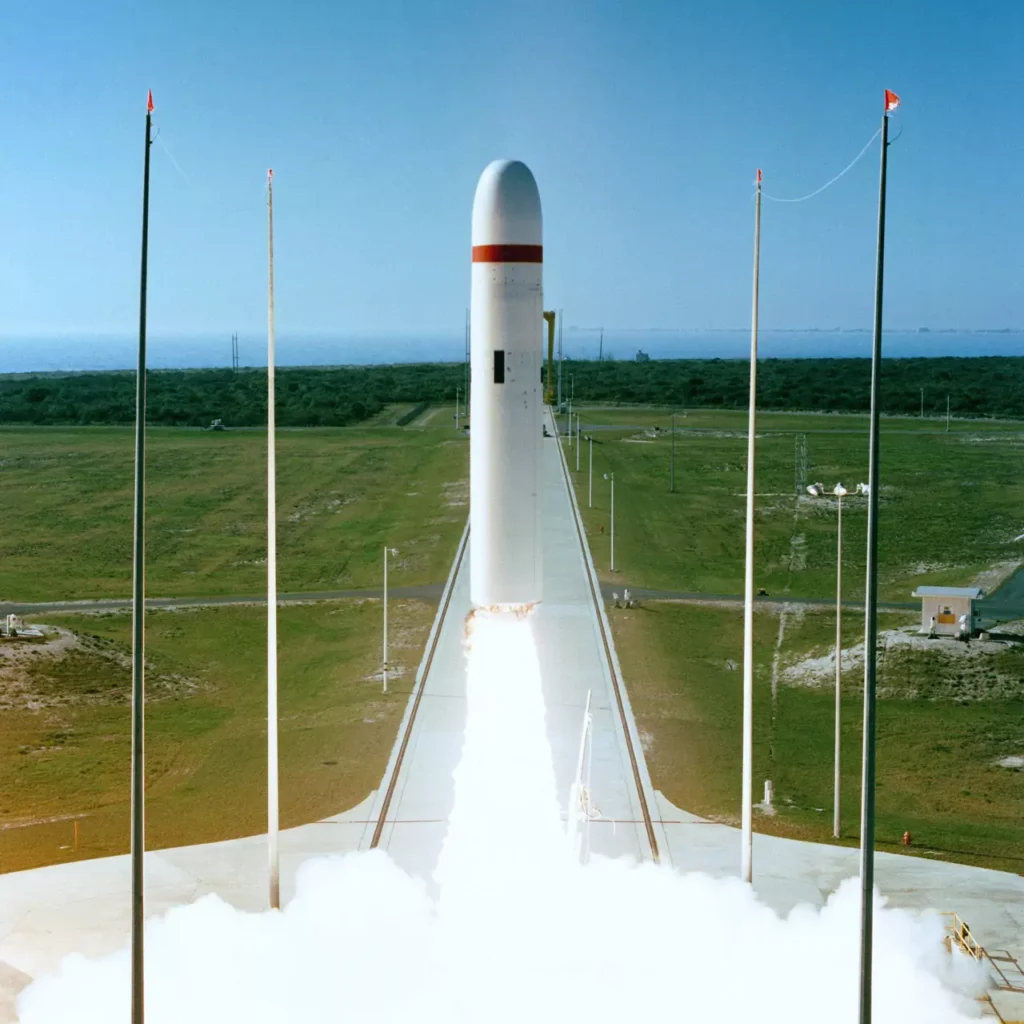
In 1967, due to Poseidon’s limited range, the focus shifted to a long-range version, leading to the Trident I (C-4)missile. Simultaneously, in 1975, the Navy started a program to enhance SLBM accuracy, revealing that an ICBM-size warhead could make an SLBM effective against hardened targets but could not be deployed on Trident I (C-4) without losing range or reducing warheads.
Lockheed began working on a new SLBM compatible with the Ohio class submarines in 1978, giving rise to the Trident II (D-5) program. The potential of this missile led Britain to choose it to replace their Polaris missiles in 1979. President Reagan announced funding for the Trident D-5 in 1981, with initial operational capability (IOC) planned for December 1989.
In 1982, Secretary of the Navy John Lehman decided to place the D-5 missile on the 9th instead of the 12th Ohio-class SSBN. After Britain’s involvement, Lockheed received a contract for operational systems development in 1983, followed by an official contract for $5.765 billion in 1984, with the Trident II (D-5) in Full Scale development for the USS Tennessee (SSBN-734).
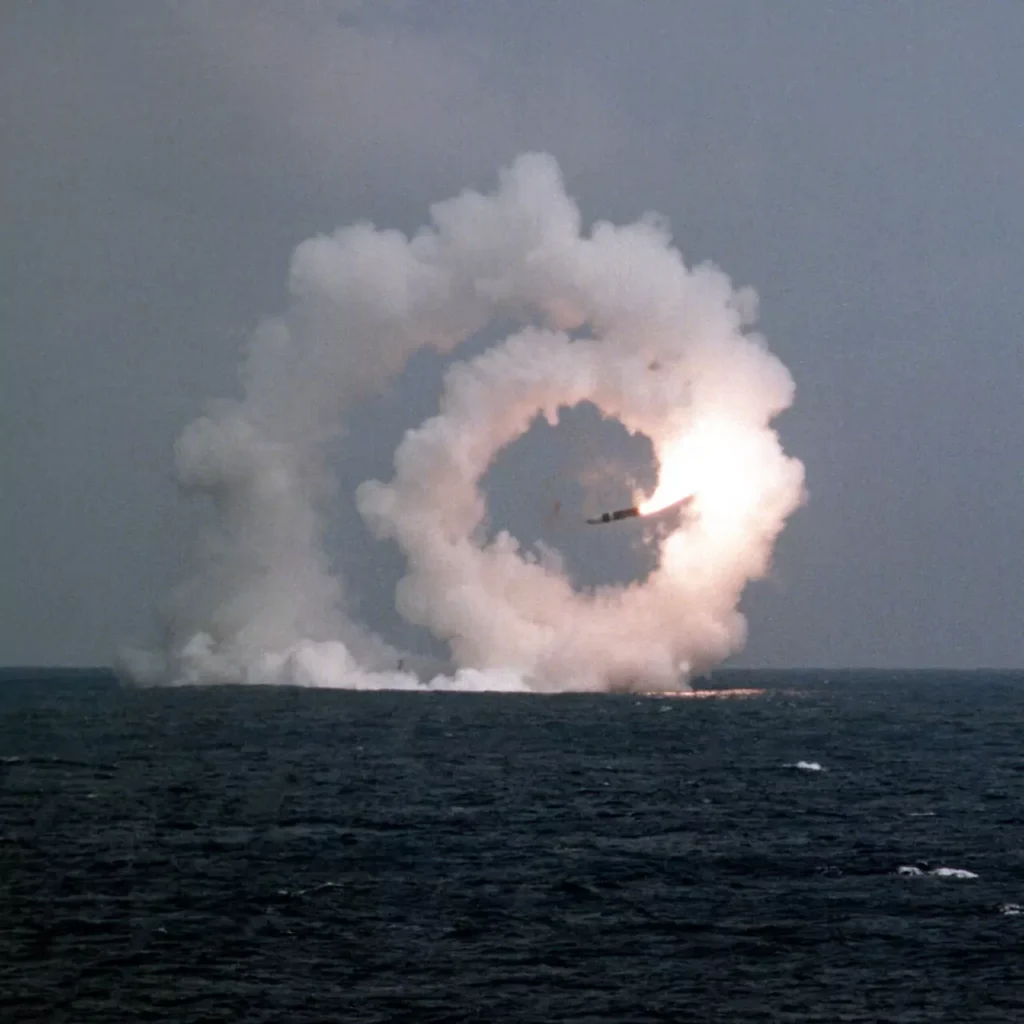
The first Trident II (D-5) was launched at Cape Canaveral on 15 January 1987, with the original plan to launch 20 missiles from a flat pad and 5 to 10 shots from the USS Tennessee. Only 19 pad launches occurred before testing moved to Tennessee. The first submarine launch was on 21 March 1989 but failed due to a nozzle issue, repeated in August, causing the delay of the Initial Operational Capability to 1990.
The redesigned Trident II (D-5) was launched on 4 December 1989, with successful Demonstration and Shakedown Operation launches in early 1990. The missile became operational with the fleet on 31 March 1990, and the entire test program, including 48 firings, was completed by 1993.
Service
The Trident II (D-5) missile became operational with the US Navy in 1990. By 1998, 240 missiles were deployed across 10 boats.
During 2004-2005, four boats were adapted from carrying Trident (C-4) missiles to accommodate the D-5. Though initially planned for a force size of 24 boats, this number was reduced to 18 and further down to 14 by 1998. The structure was set with 12 operational boats, with two in refit at any time.
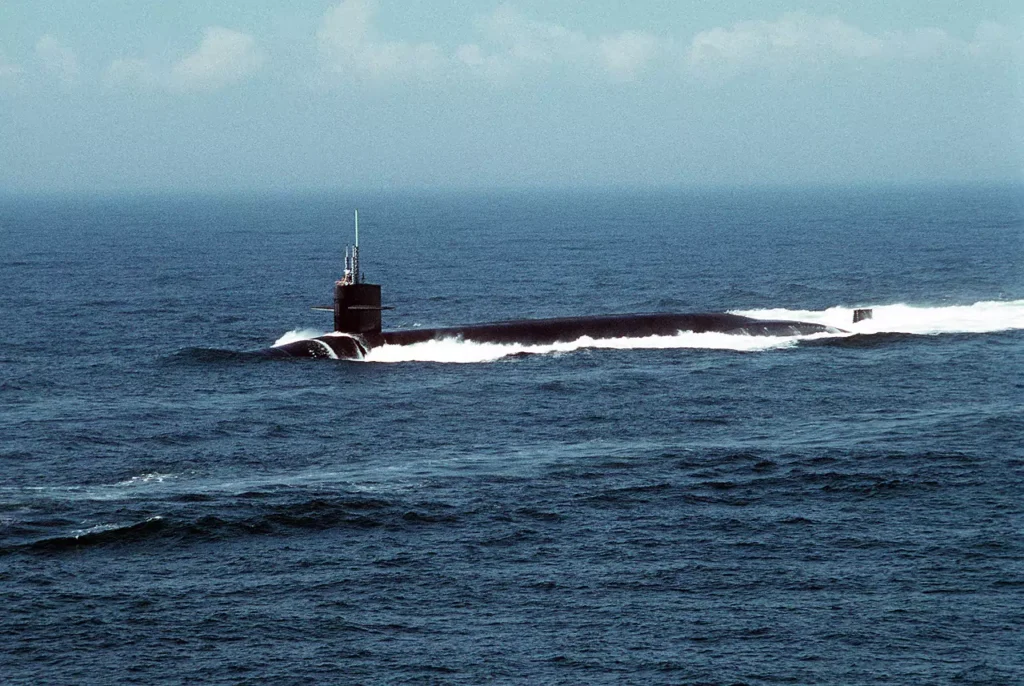
The fleet is split between two locations: eight boats operate with the Atlantic Fleet based at Kings Bay, Georgia, while six boats operate with the Pacific Fleet based at Bangor, Washington. This 14-boat fleet will serve until 2027, with a gradual reduction until 2042.
Under the START I (1991) treaty, the counting rule for the D-5 missiles was eight RVs, regardless of whether they carried Mk 4s or Mk 5s. The production rate of the D-5 was slowed from 50 to 12 missiles annually, aiming for a total of 568 by 2013.
As of June 2002, 396 missiles were built, including 1,920 RVs and warheads, comprising 1,536 Mk 4 RV with W76 warheads and 384 Mk 5 RV with W88 warheads. Production for the Mk 5 RVs stopped in 1989, and for the Mk 4 RVs in 2000.
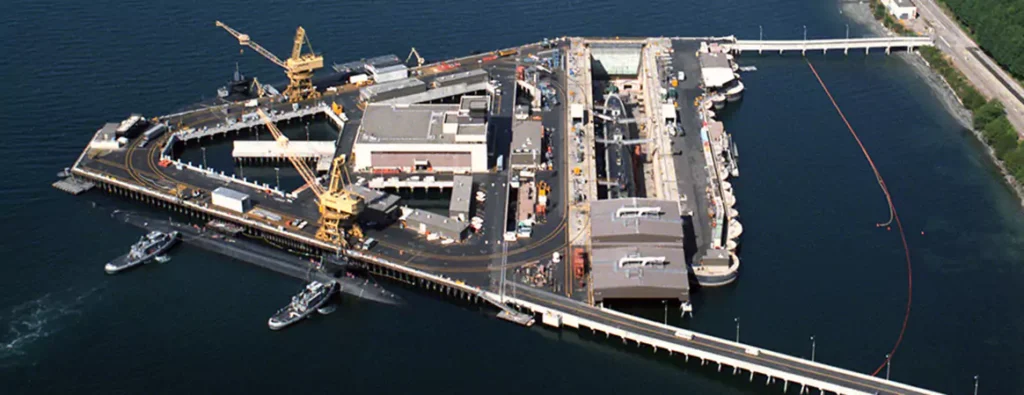
The missile’s testing record included 116 flight tests up until July 2002, highlighted by 95 consecutive successful tests from December 1989 to March 2002. There was also a notable salvo of three missiles in June 2001. Plans extended to 135 more flight tests until 2020, with 288 missiles designated for the operational boats.
The UK Trident Program
The UK initially decided to purchase the US Trident I (C-4) weapon system on 15 July 1980 but later opted for the improved Trident II D-5 missile system on 11 March 1982. The UK’s intention was to deploy these missiles across new four Vanguard-class submarines, with each equipped with 16 missile launch tubes.
The missiles were to be fitted with US-designed MIRV capability and US Mk 4 RVs, but with UK-built warheads, believed to be similar to the US-designed W76 warhead at 100 kt. Officially, it was stated that the UK missiles would carry six warheads each. The UK built four Vanguard-class Trident-carrying Ballistic Missile Nuclear-Powered Submarines (SSBN), and they are currently stationed at Faslane, Scotland.
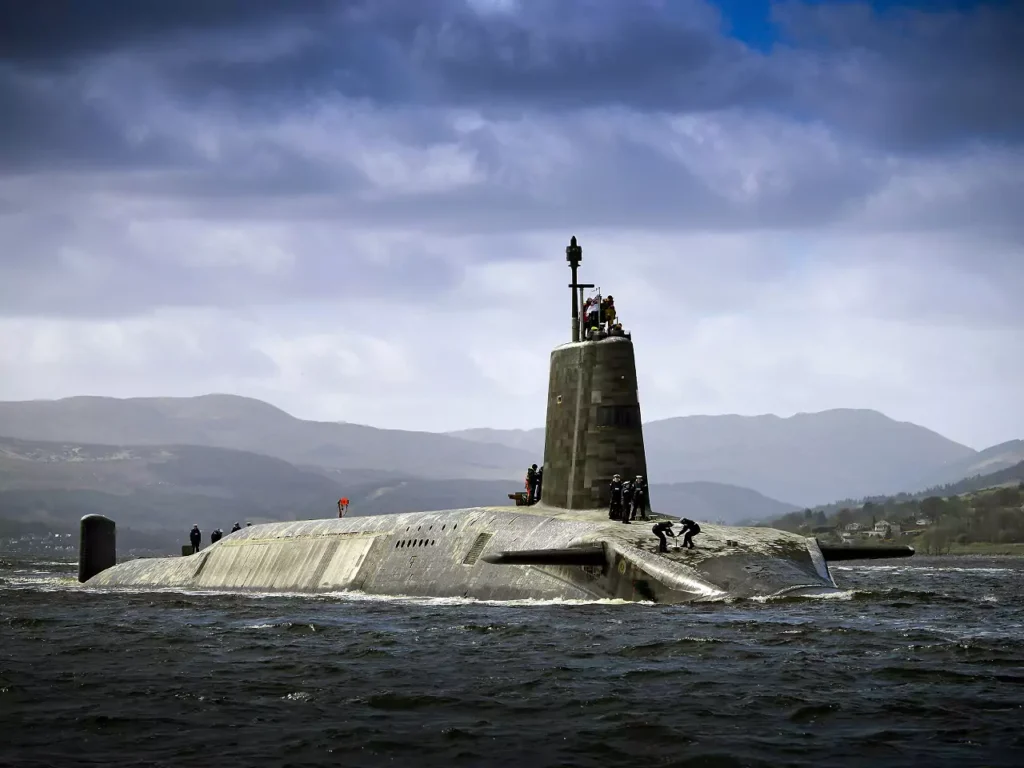
The first successful launch of a UK D-5 missile from HMS Vanguard took place on 26 May 1994, with its first operational patrol commencing in early 1995. Subsequent test launches included a second missile in mid-1994, a third in July 1995, a fourth in July 1996, and a fifth in September 2000. The second Vanguard class SSBN, HMS Victorious, successfully launched a D-5 missile on 24 July 1996.
The UK Trident system officially entered service in 1994, with a total order reported to be 58 missiles, accommodating three boatloads plus an additional 10 for flight tests. The tenth successful UK firing of a D-5 missile was achieved by HMS Vigilant on 23 October 2012.
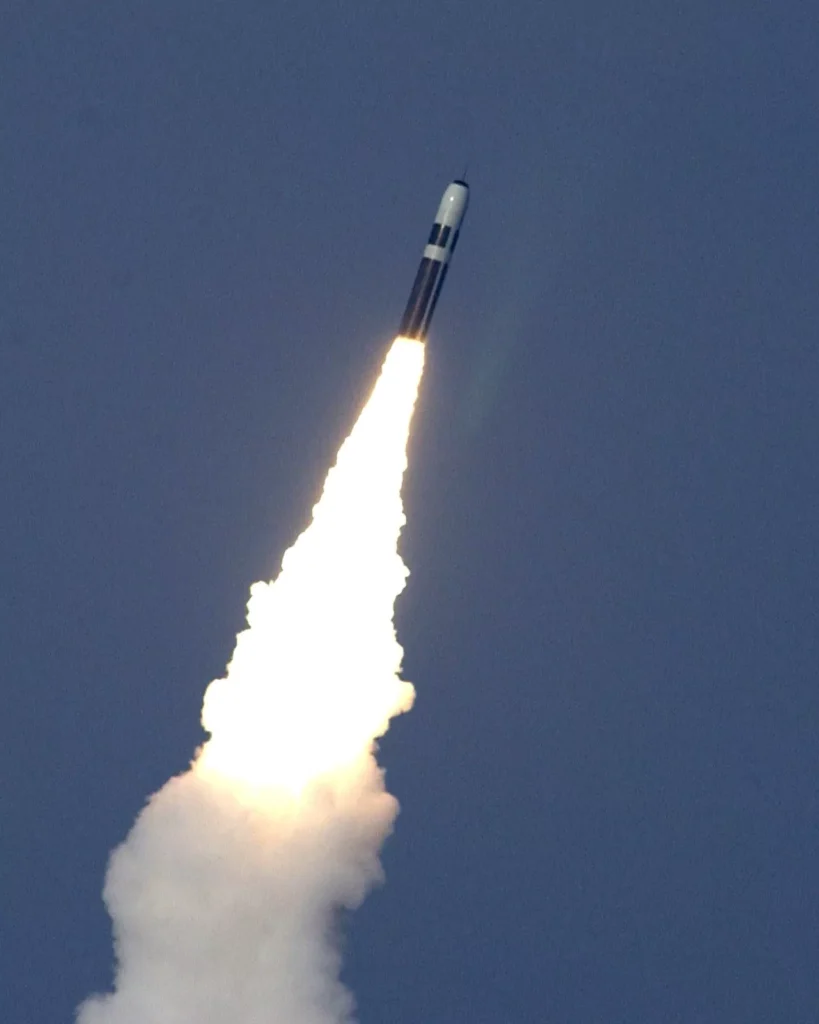
A government decision in 2011 established a maximum of 40 warheads carried in UK SSBNs, with the precise number deployed fluctuating based on prevailing circumstances.
Since 1969, there had always been at least one SSBN at immediate readiness to fire ballistic missiles. However, a change occurred following the Strategic Defence Review in 1998 when readiness to fire was extended to days rather than minutes.
Trident II D5 Life Extension (D5LE)
The Trident II (D-5) missile was first deployed by the US Navy in 1990, following a requirements order issued in March 1974 as a follow-on to the Trident I (C-4). In the mid-1990s, a program was started to extend the Ohio class Trident SSBNs’ service life from 30 to 45 years. Initially, the D-5 production line was set to close in 2007, and the first missiles were due for retirement in 2019.
To maintain a full fleet, the US Navy began a program in 2002 to create a new variant called the D5LE (life extension). The UK government decided to participate in this program, formalizing the decision in an exchange of letters in 2007, shortly after announcing it in a 2006 White Paper.
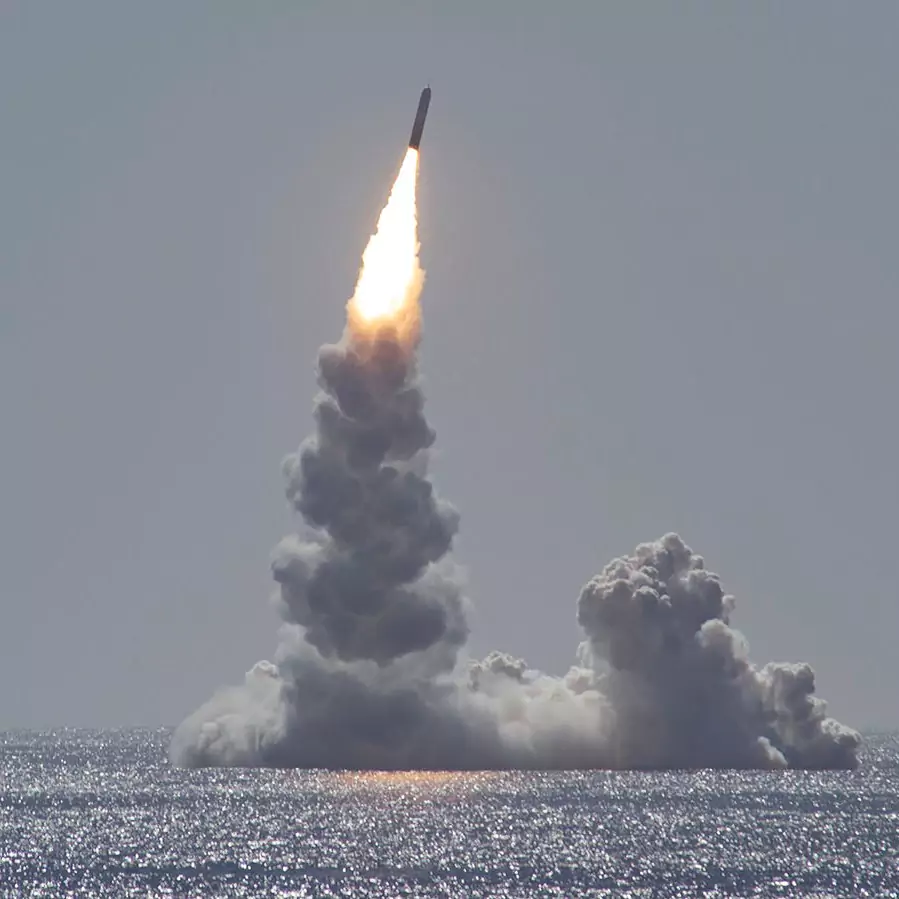
Lockheed Martin was awarded a contract by the US Navy in April 2007 to extend the missiles’ life from 30 to 45 years, and production of the D5LE began in 2008, with initial deployment in 2017.
Since then, the US Navy has been upgrading to this enhanced version, with 24 additional missiles deployed in both 2018 and 2019. The upgrades, equipped with the new Mark 6 (Mk-6) Mod 1 guidance systems, are expected to be completed by mid-2024.
The D5LE will arm Ohio class SSBNs until their retirement in 2042 and will also be deployed on British Trident submarines. The full withdrawal of US Trident missiles is planned for 2042 when the last Ohio-class submarine retires, with the likely commencement of development for a new SLBM to replace Trident in the late 2020s.
Production and costs
Originally, the US Navy aimed to buy 815 missiles to support 21 Trident II (D-5) submarines.
However, this number was decreased to 533 due to three main reasons: the assignment of 14 D5-capable SSBNs with 24 missiles each on patrol instead of 21, the proven reliability from the successful flight test program, and the implications of the START I/II agreements.
The last 24 missiles were produced in 2012.
In addition to the 533 purchased by the Navy, 28 were produced in the 1980s and 1990s for Development, Test, and Evaluation (RDT&E) for a total of 561 missiles.
The flyaway cost for the Trident II (D-5) missile was around $24.5 million (based on FY2007 figures). When factoring in the $8.0 million cost for a full-rate production guidance system, the missile’s flyaway price becomes roughly $32.5 million, excluding the warheads. Separately, a single warhead is priced between $2-2.5 million.
While the flyaway cost of a D-5 stands at approximately $32 million, incorporating research and development expenses distributed over the missile count raises the program acquisition unit price to nearly $60 million per missile.
More about the Trident II D5
Further reading
- United States Submarine-Launched Ballistic Missiles (SLBM)
- Vanguard Class of Ballistic Missile Submarines
- Trident I C-4 (UGM-96)
Bibliography
- Nuclear Weapons of the United States: An Illustrated History by James N. Gibson, 1997
- The U.S. Nuclear Arsenal: A History of Weapons and Delivery Systems since 1945 by Norman Polmar Robert & S. Norris, 2009
- Jane’s Strategic Weapons Systems, Issue 38, Jane’s Information Group, UK, 2003
- Tanya Ogilvie-White (2011) Appendix 2: Trident, Adelphi Series
- Nuclear Modernization in the 21st Century By Aiden Warren, Philip M. Baxter, 2020
- Department of Defense Authorization for Appropriations for Fiscal Year 2007, U.S. Government Printing Office